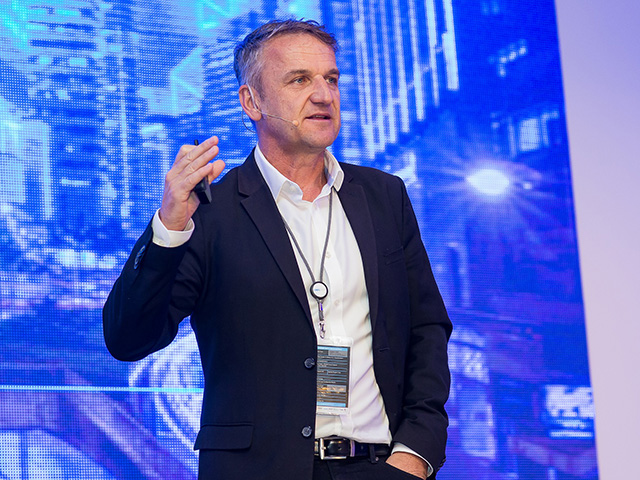Respecting the Boundaries of Earth Overshoot Day
By Industry Contributor 18 August 2020 | Categories: feature articles
By Chris Buchanan, Client Solutions Director Dell Technologies South Africa
We have all learned a lot about boundaries during COVID-19. Boundaries like six-foot social distancing are meant to keep you safe. But what are the boundaries that keep the planet safe?
This Saturday (August 22) marks Earth Overshoot Day – the day the Global Footprint Network calculates to be when humanity’s demands on natural resources and services exceed what the planet can regenerate in that year (see how it’s calculated). From now through December 31, we draw down resource stocks and accumulate carbon dioxide in the atmosphere. And this is where those boundaries start to come in.
Overshoot leads to depleting the reserves of natural capital and the planet’s ability to accommodate our lifestyle. At the rate we are consuming, we would need 1.6 Earths (in case you were unaware, we only have one). The Global Footprint Network has a calculator for determining your personal Overshoot Day that will also tell you how many planets we need if everyone lived like you do.
How it Works
When we deplete natural reserves, we eventually start pushing up against tipping points that threaten whole systems with collapse like a game of Jenga. And these systems are quite complex – so much so that small disruptions can have disproportionately large effects. You do not have to catch the very last big-eye tuna for their populations to collapse, just as you don’t have to catch every last fish to have the ocean system collapse. The tipping point is that boundary we want to avoid.
Since the 1970s, we have operated in “overshoot mode,” with the date it happens coming, for the most part, earlier each year. So every year, we use up more of the reserves we have. And the more we deplete those reserves, the more we push up against tipping points.
This year is an exception to the trend – which is important. Earth Overshoot Day 2020 is more than three weeks later than last year, a direct consequence of the coronavirus-induced lockdowns around the world. While moving the date back is a good thing, it is a product of the pandemic. We do not need to let the past determine our future. We can choose to move the date.
The Role of Technology
Technology has an important role to play in moving the date. To begin with, efforts to create “greener IT” need to continue. This includes looking at both what we use to make our products and how hardware uses energy. Dell first began using recycled-content materials in our products in 2008 and we were the first in the industry to start using “closed-loop” plastic – ones that recover plastic from old computers and recycles it into new parts for new computers. We also partner with other industries to source their waste as a resource for us – like taking carbon fiber scrap from the aerospace industry and using it to make our laptops lighter and greener. It’s all part of our design for circularity, an approach that looks not just at how we can make the most of materials already in circulation, but also how we can stretch the lifecycle of our products through repair, reuse and remanufacturing or – if they’ve reached the end of life – through recycling.
Climate impacts are also a big part of the overshoot equation. By driving greater energy efficiency (we’ve reduced the energy intensity of our whole product portfolio since 2011 by 69.9%), we also help our customers on their path to reducing emissions. Meanwhile, virtualization, AI/ML and other technologies help our customers better manage resources throughout operations.
Beyond making our hardware with climate and circular economy improvements in mind, there is an important role that technology can play in driving one-planet prosperity and moving the overshoot date back. For example, AI-enabled traffic lights to learn patterns to reduce air pollution and traffic while using deep analytics to plan for better transportation solutions overall. Or IT-enabled solutions can help manage the electricity grid better and bring more renewable energy sources online. The Global Footprint Network and Schneider Electric even did a study that shows full adoption of technologies like building controls could shift the date back 21 days.
Practical steps
Thinking about your own place in global systems can be a little overwhelming, but there are a lot of things you can do as an individual (or as a business) to help move the date. You can start by finding your own overshoot day and exploring some of the fantastic visualisations at the Earth Overshoot Day site. Then help raise awareness of Earth Overshoot Day and the concept of one-planet prosperity using social media or in a classroom.
If you’re ready to do more personally, the Global Footprint Network provides 11 steps you can take to move the date.
And while you’re at it, engage with your technology and sustainability teams to see how your organisation can move the date and meet organisational sustainability goals. Look at how you can transform your workplace to reduce commuting via long-term work-from-home policies and practices. See how you could use machine learning to create a digital twin instead of physical prototyping for your next big project. Got an idea? Reach out to see how we can help.
Most Read Articles

Have Your Say
What new tech or developments are you most anticipating this year?



